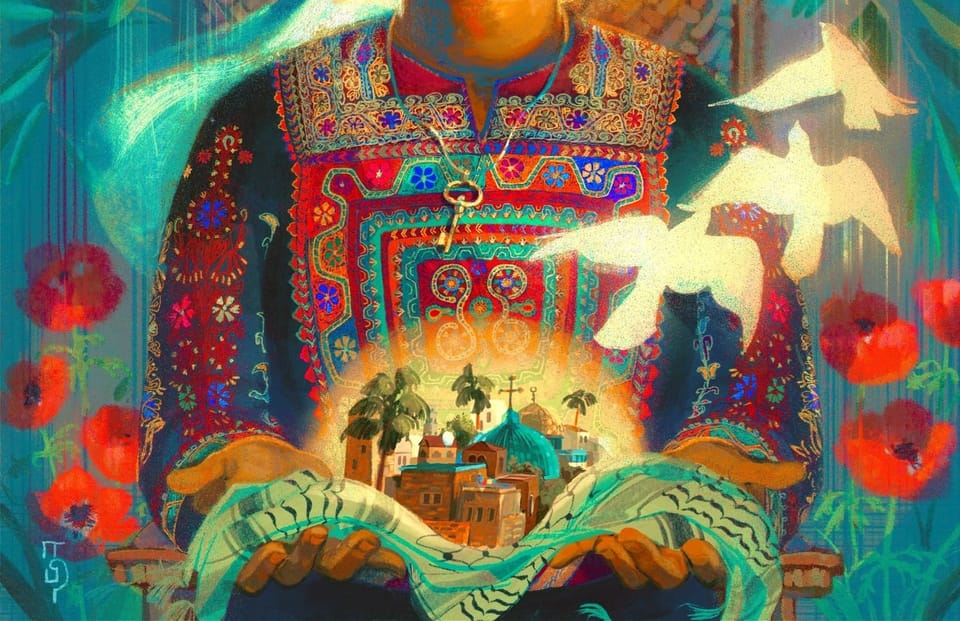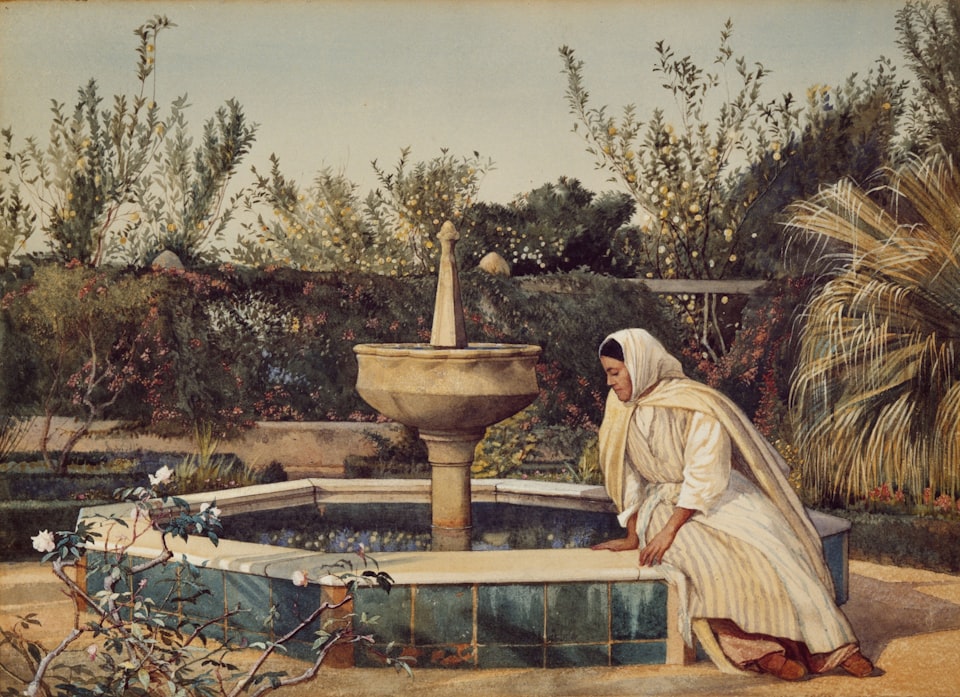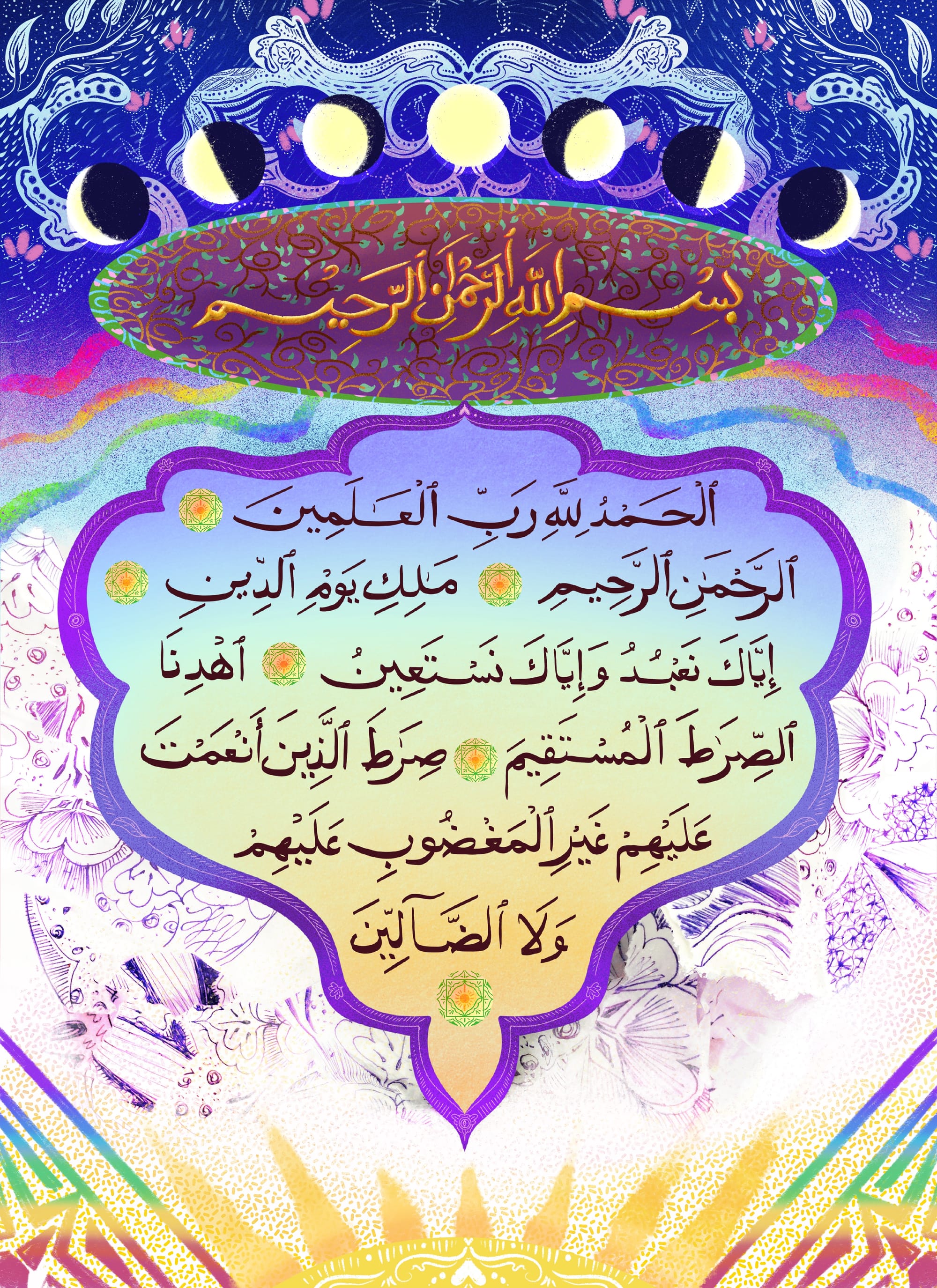The four-arched portal of Rahma
What do we do when encountering social rhetoric, verses, and hadith that seem to violate the higher Qur'anic ethical principles of love, rahma, beauty, justice, and equity? Dr Ghazala Anwar offers this Qur'anic portal of Rahma to negotiate this apparent challenge to our faith.

What do we do when encountering social rhetoric, Qur’an verses, and Prophetic hadith that seem to violate the higher ethical principles of the Qur’an: love (muwaddah), rahma, beauty (insan), justice (‘adl), and equity (qist)? Our elder, Dr Ghazala Anwar offers the Qur’anic portal of Rahma to negotiate this apparent challenge to our faith.
The fourfold portal of Rahma is what Dr Ghazala refers to as the basic principles of Quranic engagement.
In conversation, she says she favours the term ‘engagement’ here over similar terms like ‘interpretation’ or ‘hermeneutics.’ “This is because ihsan is not something you give a lecture on, it’s something you embody, an engagement that informs us from the inside.” What I also find striking about Dr Ghazala’s approach to the Qur’an is her focus on the Arabic grammatical gender fluidity within each verse, and the potential that opens up to exploring gender fluidity in ourselves, since we are all composed of a ‘feminine’ nafs and ‘masculine’ insan. To that aspect of her work, she includes (f) and (m) in the verse translations below. My spiritual practice has been all the more better by encountering South Asian thought and culture, and I am grateful to Dr Ghazala for sharing her knowledge with us here in her own words.
The portal of rahma helps us engage with and evaluate Qur’an verses, hadiths, and other discourse as Muslims from a lens of kindness and compassion.
Rahman is used to refer to Allah throughout the Qur’an in a way that no other of Allah’s 99 Names (Asma ul-Husna) are used. Because rahma is foregrounded, when we consider their possible meanings, we must choose the ones that display the most Rahma, simply because these four elements are no accident. Inshaallah this portal can help inform your own engagement with faith, identity, and activism.
The Four Arched Portal of Rahma: The Meta-Ethic of Islam
by Dr. Ghazala Anwar
1. The Basmalah— The first invocation is Rahma
﷽
In the name of Allah(f), the Loving(m), the Kind(m) (al-Fatihah 1:1)
The basmallah, the very first and most recited Quranic verse is a declaration, invocation, commitment and goal. It declares that Allah is widely and indiscriminately loving, kind and merciful to every individual life. It invokes this Rahma upon the reciter of the basmallah, it binds the reciter’s actions to this Rahma and it hopes for an outcome that is Rahma. It brings Allah’s Rahmaniyyah to the front, out of which the world is created; and Allah’s Rahimiyya, through which each creature in this world is sustained and cared for through continuous and repeated acts of Rahma. Both Rahman and Rahim are rooted in ‘rahm’, the womb, the loving and nurturing source of life.
2. The Primordial Kitab Allah— Divine Self-Inscription is Rahma
كَتَبَ عَلَىٰ نَفْسِهِ الرَّحْمَةَ
He(m) wrote Rahma(f) upon him(m)Self(f) (al-An’am 6:12, 6:54)
Allah, the Ahad (the One 112:1), wrote rahma upon Allah’s Self. This is the primordial and eternal Kitab Allah (Allah’s kitab-writing) out of which all the scriptures revealed to all the Prophets ensue. It is through the experience of Rahma that we comprehend Tawheed; and it is in the practice of Rahma that we practice Tawheed and it is with the eyes of Rahma that we see that any religion that teaches and prioritizes Rahma: loving kindness, compassion, empathy, sympathy, forgiveness, abstention from violence and cruelty, is upholding Tawheed, because Allah, the One wrote compassion upon Allah’s Self: Rahma is the identity and reference of Allah’s Oneness. Allah’s inscription of Rahma upon Divine Self which has no form, elevates it over all other Divine attributes. Rahma is what defines Allah’s presence in this world and in the next, and in the inner orientation of all persons of faith.
3. The Qur'an is Rahma
وَنُنَزِّلُ مِنَ الْقُرْآنِ مَا هُوَ شِفَاءٌ وَرَحْمَةٌ لِلْمُؤْمِنِينَ ۙ وَلَا يَزِيدُ الظَّالِمِينَ إِلَّا خَسَارًا
We(incl) send down in the Quran(m) healing(m) and Rahma(f) for the faithful (m.incl) but it increases the wrongdoers (m.incl) only in loss(m) (al-Isra 17:82)
Faith in Allah who has written Rahma upon Divine Self, is the pre-condition for accessing the Rahma from Allah’s Kitab. Experiencing and practicing Rahma for the sake of Allah, is healing for us individually and for the entire creation except for the oppressors. When we feel oppressed, let us find simple ways to practice Rahma upon ourselves and upon others: free a caged bird, or smile at a stranger, for the sake of Allah’s pleasure and it will heal our hearts and our breath, our emotions and our spirit (10:57) and make a way out of oppression for us. Practice of Rahma entails developing our hearing and seeing so we can hear a plant that is thirsty and see that a caged bird longs to feel the wind under its open wings.
4. The Propheticﷺ mission is Rahma
وَمَا أَرْسَلْنَاكَ إِلَّا رَحْمَةً لِلْعَالَمِينَ
And We(incl.) did not send you(m) except as Rahma(f) to all the worlds(m) (al-Anbiya 21:107)
The Prophet’s ﷺ mission in the world is Rahma and so the mission of Prophet’s ummah is Rahma. This reveals a shared connection between prophetic attributes, human attributes, and Divine attributes. It is in Rahma that all the hierarchies dissolve. While meditating on Allah we must foreground Rahma, while reading Allah’s book we must find or choose the understandings that foreground Rahma, while emulating the sunnah of the Prophet through reference to particular hadith we must determine if it is Rahma for all the realms of existence. While reciting the basmallah we must be aware that we are committing ourselves to Rahma. The deeper this commitment the more profound its manifestation in our own life inshallah.
Dr. Ghazala Anwar completed her PhD in Religion in 1993. Her research and teaching interests include Islamic jurisprudence and Sufism, as well as the exploration of issues of healing, gender and sexuality in Islam. She also participates frequently in national and international colloquia on interfaith dialogue and other current issues relating to Islam. For some queer Muslim history, see this NYT article from 1999:

Exercise no.9
from the workbook The Signs In Ourselves
Your Turn: Learning to befriend the Quran
At this point in the workbook, it's time for a hands-on exercise! We will read the Qur'an for more context behind two of the Rahma portal’s four elements. Since no translation is perfect, have multiple Qur’an translations on hand for this exercise; some English translations you can try are Mustafa Khattab or Abdul Haleem, both of which are available in the quran.com links below (as well as other English translations and in over 60 more languages).
Exploring the Divine Tattoo of Rahma (6:12, 6:54)
Let's read around these two verses from surah al-An'am. This surah was transmitted at a time when early Muslims who believed Muhammadﷺ faced peak social persecution and tribal antagonism so brutal that most of them had to leave their homes and migrate for safety.
- Read the verses 6:1-18 and 6:50-62. First, select the translations of your choice in the quran.com settings.
- How can you connect these reminder verses to affirm the faith of queer and diverse Muslims today who face persecution and antagonism from both Islamophobic societies and majority-Muslim societies?
Exploring the Divine Transmissions as Rahma (17:82)
Let's read around 17:82, from 17:78-100. Select the translations of your choice in the quran.com settings.
- What do you think is the connection between the strong language in the last few verses to the description of the people that came before?
- How do they differ from those who have the doubt that is essential to faith?
Collective Discussion: Going through the portal
- Nominate verses, hadiths, or social rhetoric about God or Islam that have been barriers and obstacles for you in your faith.
- Decide together which of those to evaluate through the portal of Rahma.
- Discuss all possible interpretations of your selection, then agree on the one that embodies the most Rahma.
If necessary, list as many non-Arabic translations of Rahma before you begin as a guide in the evaluation process.
This post is adapted from The Signs In Ourselves (pp. 75-77), a queer spiritual wellbeing workbook inspired by Qur'an verses 41:53, 51:20-21, and interviews with Southeast Asian Muslims. Written by Liy Yusof and illustrated by Dhiyanah Hassan, it was made available online in 2020 by the Coalition for Sexual & Bodily Rights in Muslim Societies. May Allahﷻ accept this offering and bring it to those who need it. Letters and inquiries: qmcourage [at] gmail [dot] com.




